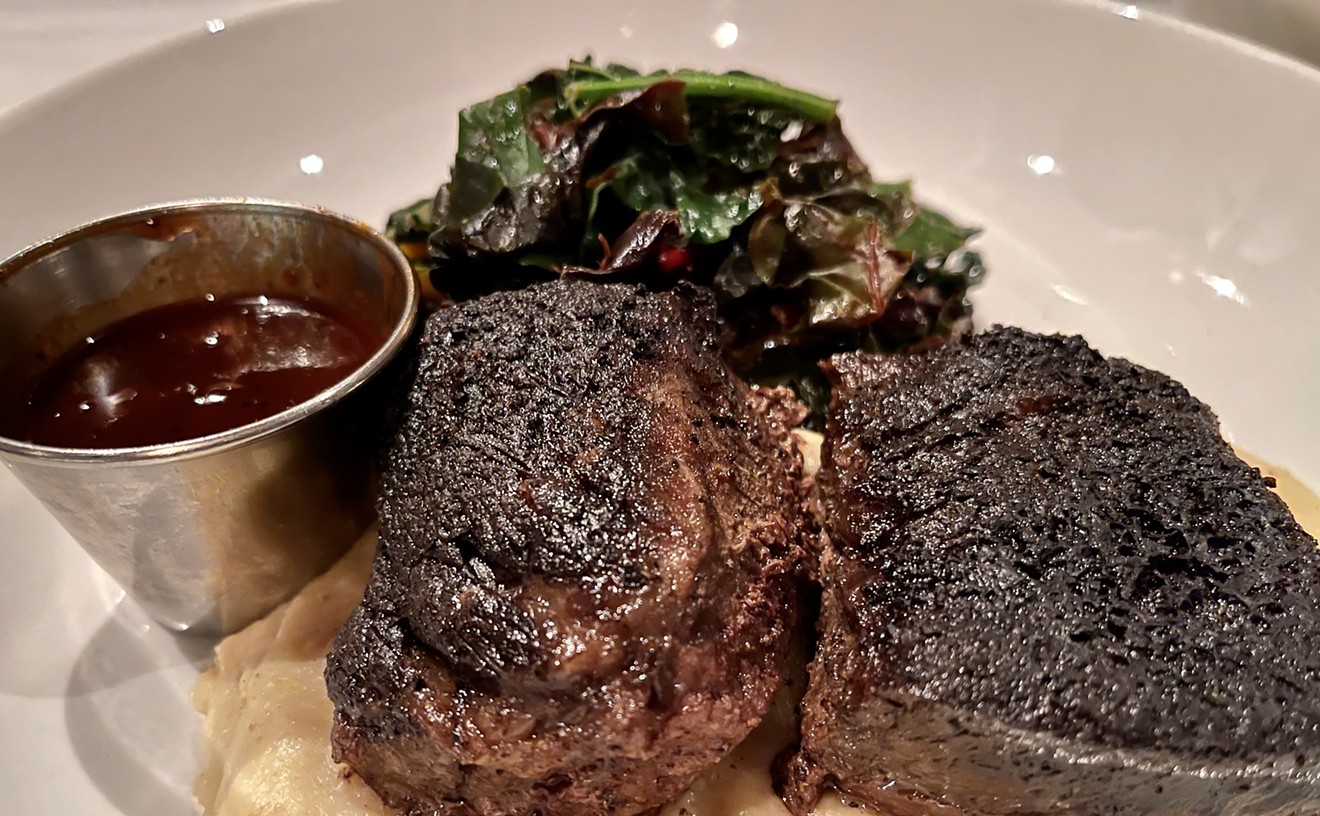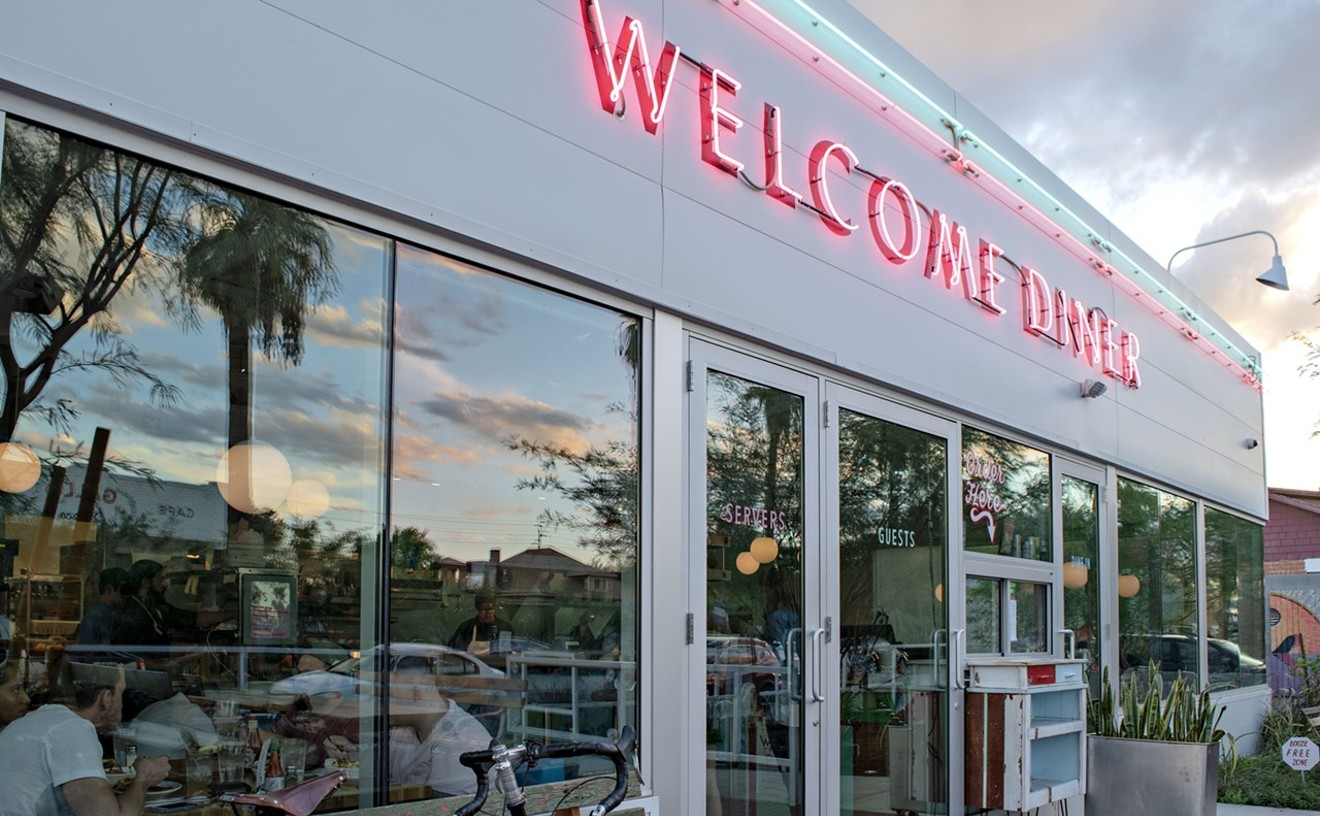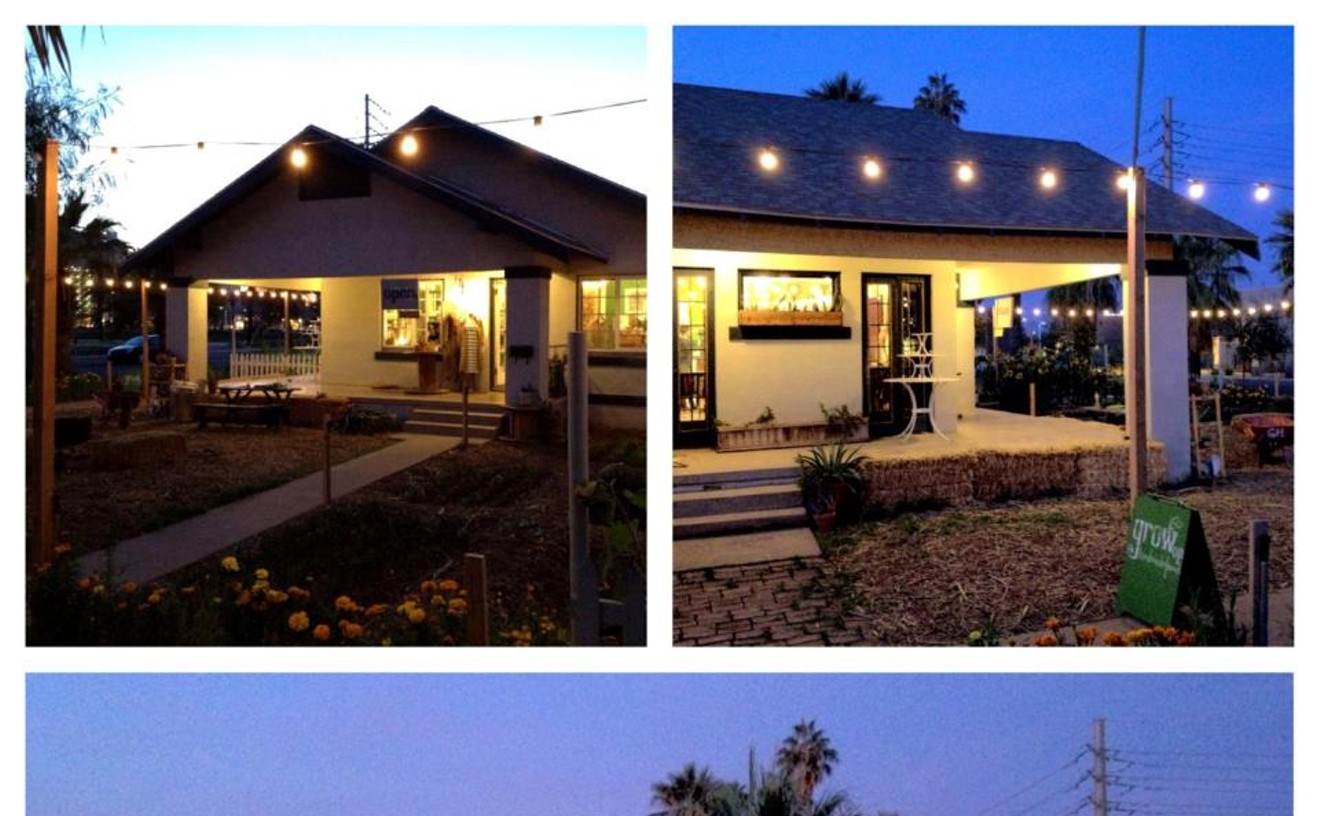Best New Restaurant
Citizen Public House

- 7111 E. 5th Ave. Ste. E., Scottsdale, 85251 Map
- 480-398-4208
- www.citizenpublichouse.com
Best New Dining Trend
Late-Night Eats

Late-night menus are being offered at a handful of local restaurants, and at some of the best ones, too. Usually called "Staff Menus," these late-night dinners often feature a single meal selected by the chef or the waiters, and often on an off-night, like Monday, and made available to a limited number of diners.
At Posh — where you literally never know what's on the menu — you can dine Wednesdays at 10 p.m. on Chef Josh Hebert's improvisational cuisine. FnB's Saturday late-night "industry" menu features Chef Charleen Badman's fine take on street food — pho, mac 'n' cheese, Sonoran hot dogs, or ramen — and, typically, a celeb-chef-spotting or two, while a recent late-night Sunday supper at Noca featured BBQ, with a deviled egg as amuse bouche, cupcakes for dessert, and plenty of brisket, hot links, and baby back ribs in between. (And just to give you an idea of how gourmet these guys roll, the salad that evening at Noca was watermelon with Benton's Country ham, arugula, pickled rind, feta, croutons and a red wine reduction.)
Citizen Public House now stays lit 'til 1:30 a.m. Thursday, Friday and Saturday, offering pub-grub favorites like its chicken-fried Wagyu burger, chopped salad and bacon-fat heirloom popcorn. Or sup on mussels, escargot and crispy French fries Saturday nights after 10 at Petite Maison.
Have a good time, just don't blame your late-night indigestion on us.
- 7167 E. Rancho Vista Dr., Scottsdale, 85251 Map
- 480-663-7674
- www.poshscottsdale.com
Best Pop-Up Restaurant
Payton Curry at The Welcome Diner

- 929 E. Pierce St., Phoenix, 85006 Map
- 602-495-1111
- welcomediner.net
Best Food Truck
Short Leash Hot Dogs
Best Revolving Door
Cycle, at Lexington Hotel

- 1100 N. Central Ave., Phoenix, 85004 Map
- 602-252-2100
- www.cyclephoenix.com
Best Green Thumbs
Roosevelt Growhouse

So just how tough is it to get your garden to grow here in Phoenix? We asked the kind folks at the Roosevelt Growhouse to explain. Three years ago, local artists Kenny Barrett and Kelly Placke were living in a large but shabby house on the corner of Garfield and Sixth streets, in the Roosevelt Row neighborhood. For years, the home had been run down by previous owners, and the yard that surrounded it was used as a parking lot.
Barrett and Placke had other plans for the barren corner lot. "We just started digging," Barrett recalls. "We came out here every Sunday, we picked a day and it was Sunday, 10 to 2, to come out here, friends started joining us, volunteers started joining us and we just started working the ground little by little."
"The great thing about Phoenix soil, desert soil, is that this soil in particular holds water really well," Barrett says. "However, it lacks any type of organic matter which you need — you need that nitrogen to feed your plants."
The Roosevelt farmers combined the absorbent desert dirt with composted manure and — voilá — it was time to plant.
Since 2008, the Growhouse has experimented with growing different varieties of lettuce, beets, chard, kale, cauliflower, arugula, carrots, spinach, broccoli, corn, watermelon, and wheat. While the operation started out small at the front of the house, it's taken over the entire front, back, and side yards in subsequent years — even the patches of earth nestled between the sidewalk and the road.
The growing cycle usually begins in August, when the volunteers come together to fertilize the soil, then use a ditch planting method for the seeds.
Harvesting begins as early as mid-October and continues throughout the winter, especially with leafy plants like lettuce and chard that will keep sprouting new shoots.
As the year wears on and temperatures climb, the gardening begins to wind down. The last crop to be planted to grow through the summer is corn, which adds some much- appreciated greenery to the Roosevelt Row landscape and fares well even in the heat. The soil has to be watered continuously even through the summer months and covered with mulch to maintain its moisture and protect the delicate microorganisms that begin to flourish from the fertilizer.
The garden has grown — and spread, as Barrett and Co. are working with Roosevelt Row to encourage others in the area to plant community gardens. As for the Growhouse, they've bought a tiller — and they know what to do with it. Another plan in the works: vermicomposting, a big bag full of compost and worms through which a watering tube is fed and which can then be thrown anywhere; seeds are planted right into the bag and need no contact with external soil to grow.
Look for Growhouse produce at the Downtown Phoenix Public Market.
- 902 N. Sixth St., Phoenix, 85004 Map
- 602-885-6267
- www.facebook.com/rooseveltgrowhouse
Best Underground Supper Club
Woody's Underground
If not, you might want to try to hook up with Chef Woody (a.k.a. Forrest Rosh), who's been throwing dinner parties in his mother's North Phoenix backyard since last November.
Rosh, 22, is a graduate of Cordon Bleu in Scottsdale. He's worked at the Wrigley Mansion and the House at Secret Garden. He knows his way around a professional kitchen. But one day he decided to go basic. He made a web site and put up some flyers. No specifics about the menu were given. Through word of mouth, 25 people made a "suggested donation" of $40 on PayPal, BYOB'd it, and found their way to a seven-course meal in Eduarda's backyard. The place settings came from Goodwill, but no one skimped on the food. That first menu included cold and hot soup shooters, pork belly cilantro salad, a cheese board, warm butternut squash and arugula salad, sorbet intermezzo, salmon cakes, hanger steak with mac 'n' cheese and Brussels sprouts, and finally a semifreddo for dessert. The meal went on for three hours.
Since Woody's Underground is not a restaurant, Rosh cannot charge money, tax, or tip for the experience, and he and his family do not have any relationships with health inspectors, fire marshals, or PR agencies. Think of it as a dinner party for strangers. At the end of the first evening, the family broke even. They considered it a smashing success.
Preparation and service is a family affair. Rosh uses nothing more than the standard fridge and sink, a four-burner stove, and a lot of organization to pull it all off. His sister helps with the management, and a slew of teenage cousins are brought in to bus, plate, and clean. While space is a challenge at times, careful planning has made everything work so far.
The second event was a brunch, which attracted more guests, followed by an all-you-can-eat pasta supper designed to reach a broader demographic. But with space for just 40 in Mom's backyard, Chef Woody's going to have to get creative.He's been thinking ahead. For his meals, Rosh relies on local farms and retailers as much as possible and presents a list of his suppliers to the guests in hopes of promoting their businesses. He also is hoping to start a vegan line of baked goods to sell at local small business and farmers markets — Woody's Goodies.
As fall approaches and the temperature cools, Rosh is beginning to plan the next backyard events, and considering hosting events at other private homes. Instead of planning bigger parties, the goal for the moment is to keep things small. You know, underground.
Best Steak House
Donovan's Steak & Chop House

- 3101 E. Camelback Rd., Phoenix, 85016 Map
- 602-955-3666
- www.donovanssteakhouse.com
Best Tunnel in a Tourist Trap
Rustler's Rooste
Perched atop a mountain ridge hundreds of feet above the Valley, Rustler's Rooste is hardly underground. But follow the winding road up to this cowboy-themed chophouse, wave at "Horny" the live bull standing in his outdoor pen, and ease open the massive wooden door. Suddenly, you'll find yourself inside a cramped, rock-lined mineshaft literally hacked into the side of South Mountain. Wrapping around the corner, guests emerge into a massive two-story dining space brimming with kitschy-cute charm, including a waterfall streaming down one entire rock wall and a metal slide leading down to the second floor. Yes, a slide. No wonder this 30-year-old landmark has hosted everyone from Clint Eastwood and former President George H.W. Bush, to, um, Ice-T and Coco. Sadly, only two of those people rode the slide, and it wasn't Dirty Harry or the commander in chief.
Best Underground Food Tradition
A Mormon pantry
Ask a Mormon family to see their pantry and you might get a tour of the kitchen, but ask to see their "year's supply" and given the house's floor plan, you'll probably end up in the basement.
A year's supply is an LDS tradition, heavily encouraged by church leaders, in which individuals and families carefully plan, can, jar, and store basic items (water, flour, rice, salt) in ratios per person in the house and per month of expected storage.
Church members say a year's supply is never something purchased at once or backed into the garage with a truck. The collection (of what could easily be mistaken for a quick fix for 2012 or total wipeout) is a stash of long term storage with a rotating "three month's" supply of more perishable food items in case of community disaster, a sanitation issue — hell, even a crappy economy.
It's all about preparedness, church documents, and food preparation pamphlets, and it's often hard to do (especially in the desert and in houses without pantries — or basements). But individuals and families have adapted and thank modern-day solutions (read: The Container Store) for tubs easily disguised as hallway benches and false shelves that rotate to reveal hand-jarred preserves and tightly packed grains.





